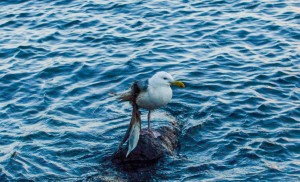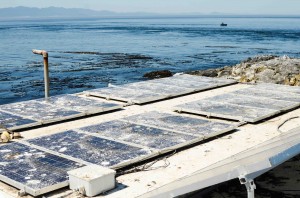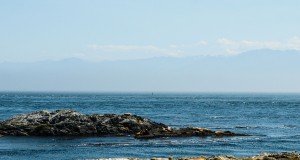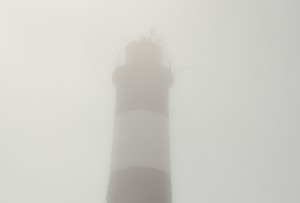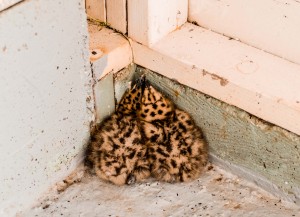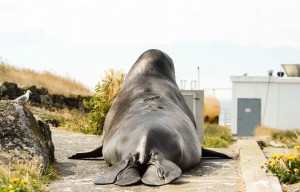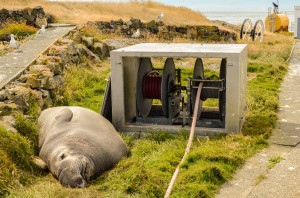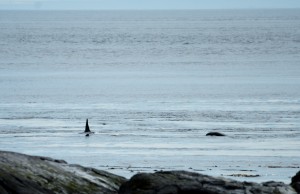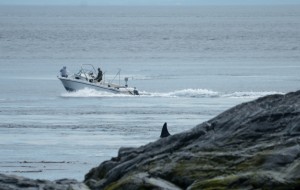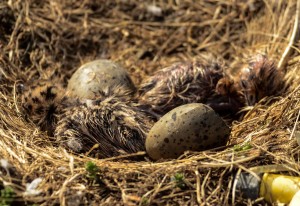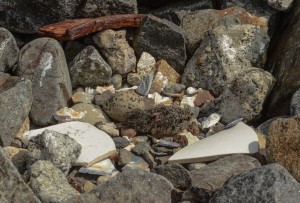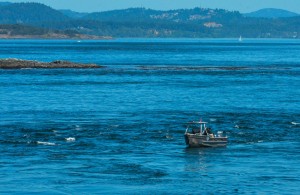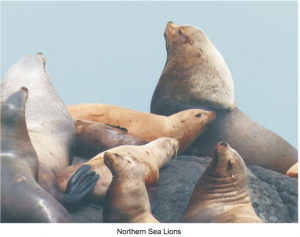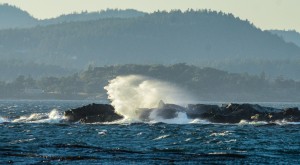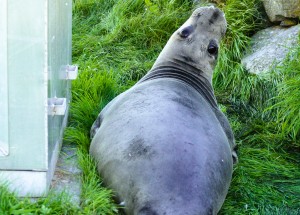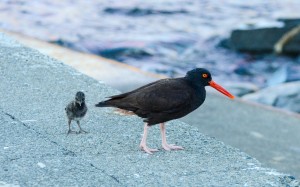| Daily Seawater Temperature and Density Record Shore Station | |||||
| Time Zone: PDT | |||||
| Station Race Rocks Lightstation | |||||
| Month: ___July _________ | Year: 2013 | ||||
| Observer: Lester B. Pearson College of the Pacific | |||||
| Continue reading | |||||
Monthly Archives: July 2013
Shit Happens…
Yesterday evening as I went out to collect the water sample I interrupted a couple of harbour seals feeding on a glaucous-winged-gull. Harbour seals feed on fish more commonly although they do sometimes feed on gulls. The seals, upon seeing me, fled leaving the injured gull in the water. It clumsily exited onto shore but was tripping over its dragging wing. I shooed it back to the water in hopes the seals would return. When they did not and I went out a second time to find the gull wandering aimlessly in the rocky intertidal zone. Meanwhile, the seals had returned to the jetty area and were feasting on a fish. In situations like these we have to make a judgement call and the gull seemed to be needlessly suffering. The chance of it being eaten by the seals was very unlikely since they had found other food and an eagle coming to finish the deed was also unlikely because it was late in the evening and their visits are generally midday. It didn’t seem right to let it suffer through the night so I put it out of its misery.
In other gull news, an ongoing project we’ve been working on is tilting the solar panels. Angling the panels allows more direct sunlight but more substantially, discourages the gulls from using them as resting spots. Gull droppings can have a large effect on energy intake of the solar panels. Sounds unreasonable? Here’s a picture of the panels after just one day since being cleaned.
On another note, more stellar sea lions have accumulated on the southern rocks. The count has reached over 30.
Out in the fog…
We’ve had the most fog of the summer yesterday and this morning, so thick the shoreline isn’t visible from the tower at points. The fog yesterday didn’t clear until late evening.
The gull chicks are just starting to fly, although there have been some later hatchings this year too. The parent gulls have been very protective and aggressive. When young chicks wander close to another nest, mothers attack the chick or its parent gull. There have been at least four chick casualties this season because of this. These two chicks, pictured below, discovered the protected corner of the boathouse just before I was about to paint the floor. Luckily their squawking parents were close by and I was able to help them on their way.
A group of five stellar sea lions arrived on West Race Rocks and the southern rocks this past weekend. Only one California is here now that has been here for a few weeks now. Chunk, however, left the island last week and has not returned, leaving Misery as our only elephant seal at the moment.
Job Posting: Ecoguardian at Race Rocks
This position has now been filled:
Victoria July 15/13
UWC Pearson College currently has an exciting, interesting and unconventional position to fill as part of its environmental stewardship and educational programming at Race Rocks Ecological Reserve.
If you:
- Enjoy being immersed in, and observing nature.
- Are self-motivated; like to work as part of a team and larger cause, but also independently for extended periods.
- Enjoy working with your hands.
- Enjoy Living a low footprint/ low consumption lifestyle.
- Enjoy your own company but also occasional interactions with others.
- Are trustworthy and values driven.
- A bit of a techie/geek at heart.
- Need something different and out of the ordinary.
Then this may be just the job for you. Continue reading
Human Presence on the Reserve
This past week, we delivered over 4000L of diesel to the island. Even though Race Rocks tries to source its energy from more sustainable practices like our solar panels, often they’re not sufficient to completely power the island. During the dark cloudy days we see so often in winter we rely on our diesel powered generator. Erik Shauff collects thousands of litres of diesel per load in a large metal container from Pedder Bay Marina and delivers it to the reserve by boat. Then we use an electric pump and hose system to transfer the diesel across the island into its holding tank. Pictured above is Misery supervising the process. Erik surveys the yellow diesel tank in the background.
We also had a whale sighting in the past week. A pod of orcas (with at least one calf) passed through the south side of the reserve on Friday. As always, orcas attract alot of boat traffic. I noticed a cluster of whale watching vessels before the orcas. When the pod moved towards the reserve the whale watchers didn’t follow but instead kept their distance and motored ahead to the next point they calculated the pod to be.
One private boat-owner, however, chased the whales right through the reserve.
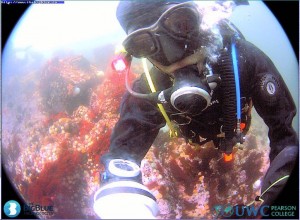
Caught on Underwater Camera 2 by Adam Harding
On one of the trips for diesel, Erik also brought his dive gear to clean the Underwater Camera 2.
Lots of littluns!
The glaucous-winged gulls have started hatching all over the island. Stressed parent gulls are VERY protective, dive-bombing any passersby. And for good reason because the juvenile bald eagle has paid a few visits in search of lunch.
There are generally 3 eggs to a nest although many only have two.
The oystercatchers on the south side of the island hatched on Sunday mid-morning. Notice the similarly coloured eggshells. Even though the two chicks have different nesting environments, a similar pattern camouflages them in their surroundings. The oystercatcher shells are also considerably smaller in size.
Although we’ve had less whale-watchers these past few days, a number of dive boats have visited the underside of the island. Don’t be fooled–the weather might look nice, but the water’s still only 10 degrees celsius!
Race Rocks Field Trip of Friends of Ecological Reserves
Link to an article in the FoER Newsletter by Aziza Cooper on the Race Rocks Field Trip of Friends of Ecological reserves, May 12, 2013. http://ecoreserves.bc.ca/?p=17947
Strong Wind, DND, Coast Guard, Elephant seals, and Oystercatchers
The wind since Sunday evening has been very strong and even reached over 50 knots on Monday just before midnight. The photo shows North Race during a 30 knot wind. As the wind carries the water in the photo, it also sprayed the house windows which now are in sorely need of a clean.
During the winds, the Coast Guard paid a vist.
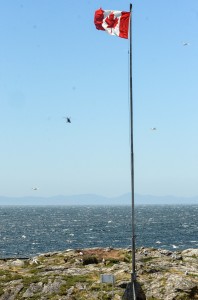
Coast Guard helicopter passing by a quick visit to the island, hovering over the helicopter pad for several seconds without landing and then taking off again. It looked like it was having trouble with its stability in the wind.
Another noise-maker for the past two weeks have been the blasts on DND. There have been as many as 5 or 6 per day on severals days since my arrival June 24.
A new female visitor came to the island Wednesday night. I noticed a juvenile elephant seal
Tuesday evening resting near the fire hose box. She was gone the following day but returned at around 22:30 when I ran into her with Chunk and Misery in the shallow water near the jetty while taking a water sample. Something that has been interesting upon her arrival is that Chunk and Misery have both changed their regular resting spots. Possibly just a coincidence, Misery has always been the one closest to the female.
On a bird note, the new oystercatchers have left the nest. The two have been exploring the jetty and surrounding area accompanied by two adults who become very vocal when any danger is in sight. The eggs on the opposite side of the island have yet to hatch.
Race Rocks: Legislative Gaps in Protecting Inshore Marine Protected Areas : Ken Dunham
Ken Dunham, a graduate of Pearson College UWC, now enrolled in a Law program at the University of Ottawa has submitted the following as a class assignment in Natural Resources Law, CML 1105H for Professor Stewart Elgie.
See the complete paper in this PDF: Race Rocks Legal Analysis-1
Introduction
Canada is a country of incredible natural beauty and ecological diversity, a significant portion of which has been protected under a system of national and provincial parks and other reserves. One might think that it would be a straightforward matter to similarly protect another unique ecological zone. Especially if it was small, located in a relatively remote location, and there was no suggestion that it should be used for anything else.
This paper explores why this is not so simple in the context of inshore marine areas. Canada’s constitutional / legal framework creates several gaps and overlaps with respect to the environment. The broader issue is not with any particular piece of legislation, but rather the sometimes-narrow context in which each was devised. This is further complicated by how the various statutory pieces fit together (or not) under the division of powers outlined in Canada’s constitution.
These issues can frustrate even the most straightforward project that attempts to carve out a little bit of nature for the benefit of future generations, as exemplified by Race Rocks.
———-
Conclusion
From a legal and constitutional perspective, the most comprehensive protection for Race Rocks would involve the Province of British Columbia transferring the islets and neighboring seabed to the federal government, followed by designation of Race Rocks as a Marine Conservation area under the CNMCAA.93 This would place stewardship of Race Rocks under one government and one minister.
The alternate approaches all involve significant legislative, constitutional, and ministerial gaps that leave major eco-systems at Race Rocks without complete protection.
An outright fishing ban within the boundaries of the Race Rocks reserve would greatly simplify enforcement and prosecution.
Regardless of the approach taken, continued involvement of the local First Nations is essential, given their Douglas Treaty fishing rights and various Aboriginal claims currently being negotiated. The First Nations perspective is that they should be one of three governments sharing decision-making authority as equals, and not merely labelled as just another stakeholder to be “consulted” (i.e. possibly ignored).
See the complete paper in this PDF: Race Rocks Legal Analysis-1

